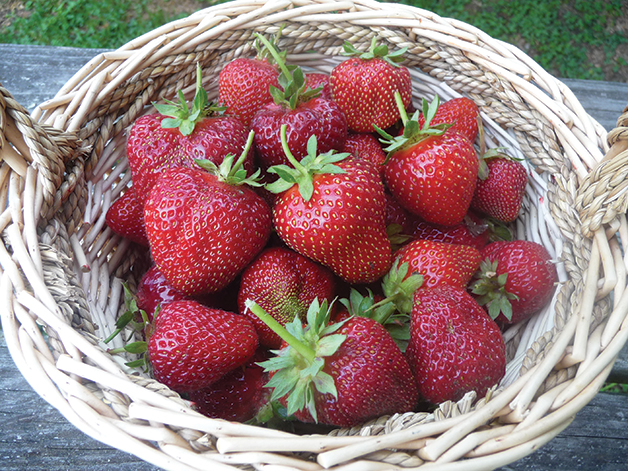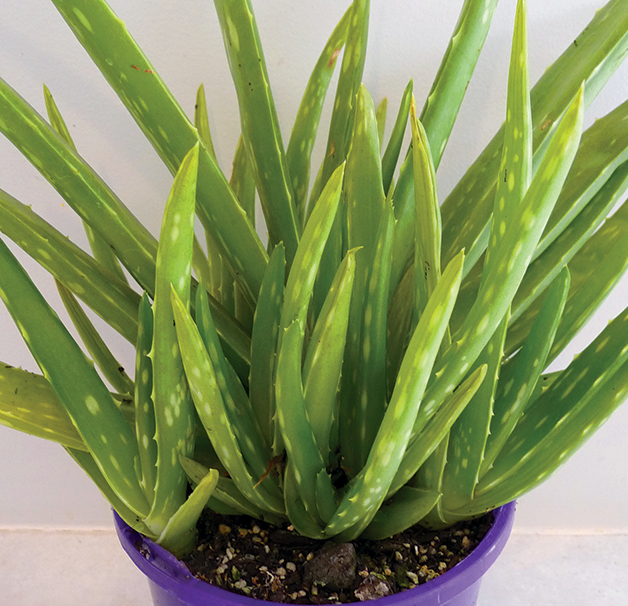Mahi Māra Winter Aloe Vera & Strawberries
Jul 3, 2017

A beginner’s guide to growing organic vegetables
Nā Tremane Barr
 Winter is a time of rest in the māra and an opportunity to harvest the work of summer and autumn as it comes slowly to fruition. This winter season I have silver beet, spinach, kale, leeks, and broccoli outside; with parsley, coriander, and lettuce in the tunnel house. I sometimes forget that even at this time of year the plants still need a regular dose of liquid fertiliser once a week.
Winter is a time of rest in the māra and an opportunity to harvest the work of summer and autumn as it comes slowly to fruition. This winter season I have silver beet, spinach, kale, leeks, and broccoli outside; with parsley, coriander, and lettuce in the tunnel house. I sometimes forget that even at this time of year the plants still need a regular dose of liquid fertiliser once a week.
My favourite part of winter is looking at the empty spaces in the māra and planning for the coming spring growth. Even though we had a cool spring and summer, my strawberry patch was incredibly productive this year and rewarded my whānau for their foraging efforts. Having berryfruits in the māra is a real treat not just for one’s taste buds, but also for one’s health. They contain powerful antioxidants, dimethyl resveratrol (which promotes healthy organs and joints) and dozens of other phytochemicals, amino acids, and coenzymes. They also contain trace minerals including magnesium, selenium, zinc, molybdenum, potassium, and calcium. Elevated biotics on the skin of fruits including strawberries help to restore healthy gut function that enables the body to help produce all the coenzyme varieties of vitamin B12 one needs. This makes berries like strawberries great brain food and an all round health tonic.

However, strawberries decrease in production after their second year, so it is time for me to create a new patch. It is usually best to buy in fresh strawberry plants from a garden centre, as this way you can be guaranteed that they will be disease-free. The best time to plant them is mid-winter, as this will give them time to establish their root system before coming to life above ground in the spring, and also, this will allow for earlier fruiting. Strawberries thrive on copious amounts of compost, which can be dug in first. The soil is best mounded up in rows about 30cm apart, with the plants spaced 20–30cm apart in a row. Some prefer to use black plastic as a mulch as it helps keep the soil warm, suppresses weeds, retains moisture, and keeps the fruit clean. However, I prefer the more natural method of using straw mulch around the plants and between the rows. The health and productivity of the plants is boosted with a regular spray of liquid fertiliser once every 1–2 weeks after the plants start flowering in the spring.
Berries like strawberries [are] great brain food and an all round health tonic. The main health quality of Aloe Vera is its anti-inflammatory nature, which is antiviral, antibacterial, antifungal, and antiparasitic.
Aloe Vera is another very valuable perennial plant that can be grown indoors in a pot at this time of year. The main health quality of Aloe Vera is its anti-inflammatory nature, which is antiviral, antibacterial, antifungal, and antiparasitic. This makes it great not only for skin complaints such as burns, cuts, scrapes, bruises, bug bites, and sunburn; but for ingesting to soothe conditions like acid reflux, bloating, constipation, irritable bowel syndrome, haemorrhoids, Crohn’s disease, colitis, dysfunctional liver conditions, and autoimmune diseases.
Aloe Vera varieties are succulents from the lily family. They originate from North Africa, so prefer a warm environment. They won’t survive outside in an Ōtautahi winter, but can be easily grown indoors. I purchased mine in autumn from a garden store, but they can usually be bought year-round. When buying an Aloe Vera, avoid plants that are dropping leaves, or have brown, yellow, or spotty leaves. Also, reject any plants with roots growing out of the bottom, as they have been in their pot too long.

Aloe Veras like plenty of sun, so a windowsill facing north during winter is just fine. When it warms up and the threat of frosts has waned, they can be moved outside in spring. They require little water, as water-logged roots easily rot. Watering every couple of weeks should be sufficient. Overwatering Aloe Vera is the number one cause of plant death or failure to thrive.
There is some evidence that the plants can be toxic to small animals such as cats and dogs, so it’s best to grow them where furry friends can’t nibble at the leaves.
Because the gum in Aloe Vera leaves is so useful, people tend to pick too many leaves, overstressing the plant, and threatening its survival. However, Aloe Vera naturally sprouts offshoots which can be used for starting new plants. You do need to be patient though and wait until the offshoots are big enough, which is usually when they are around one-fifth of the size of the mother plant and/or have three of their own leaves. At this stage they will have their own root system and can be carefully cut away from the mother plant with a sharp knife. They prefer to be planted in a dry cacti type of potting mix that is half compost and half sand, with gravel stones at the bottom of the pot to aid in keeping the roots dry. It is best to leave them a week after planting before watering for the first time. By potting up the offshoots, you will have a regular supply of new Aloe Vera plants to meet your needs.
Tremane Barr is Ngāi Tahu/Kāti Māhaki ki Makaawhio. He has been gardening organically for more than 20 years. Tremane is currently a Research Fellow based at the Ngāi Tahu Research Centre at the University of Canterbury and is working on the Raumanga Rōnaki Mahinga Kai project.